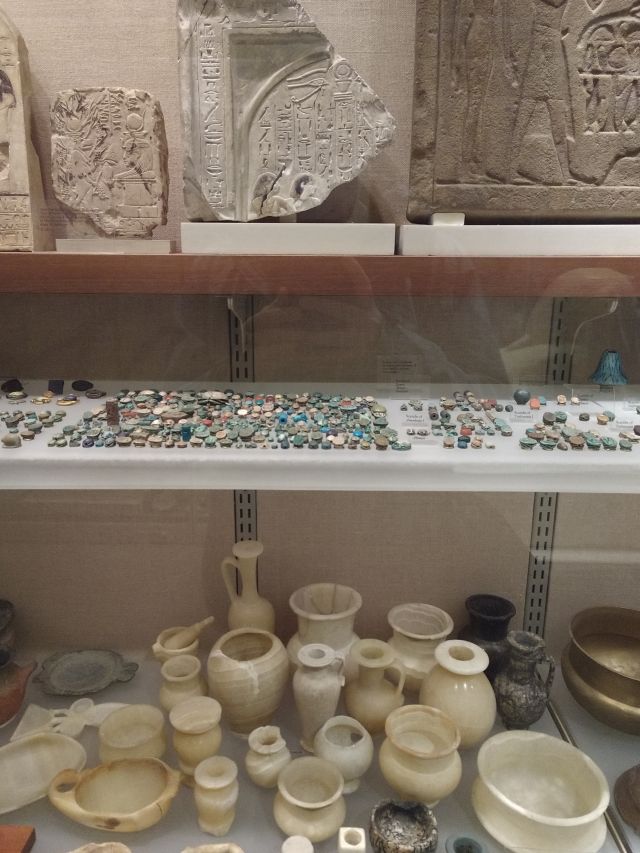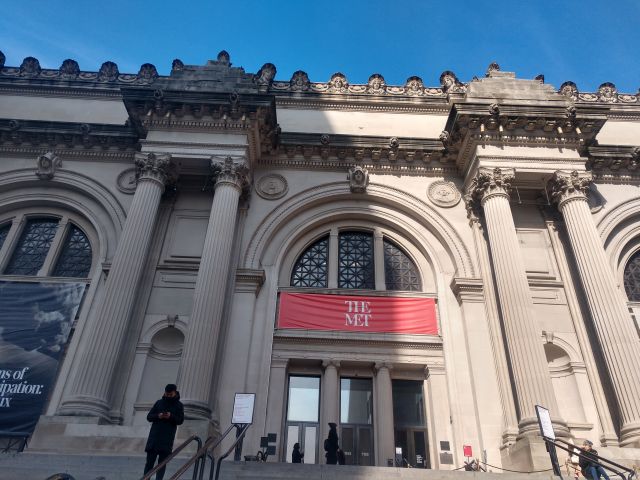On Saturday night I returned to Williamsburg after spending a few intense research days at the Metropolitan Museum of Art reading about the Neighborhood Circulating Exhibitions. After months of delays and waiting due to the ongoing pandemic, I finally had an opportunity to resume my archival deep diving. Let’s take a look at this most recent excursion.
Unlike my last trip to New York, which was spent in the galleries, this latest visit was strictly an archival one. Since the archive is dealing with a backlog of requests, I was situated in the museum’s Watson Library, which allows for more space. For two days, I made this reading room my office, arriving when the Museum opened at 10, and leaving when the reading room closed for the day at 5.
As Antoinette Burton argues in the introduction to the anthology Archive Stories, every archive exploration is different. I can certainly testify to that point from personal experience. At Roswell, my archival perusal was intermittent, accommodating my primary obligations as curator. At the Archives of American Art, I photographed my documents while also reading through them, getting a sense of the content while making copies for future reference, a decision that would prove prescient a few months later. During my trips to the Middlesex County Museum and the Greenville Museum of Art, I minimized my time in the archive by photographing the documents without reading them until later, reflecting the realities of pandemic-era research conditions while also giving myself the space to sort through the documents in the future.
The Met experience, by contrast, was a condensed deep dive combining skimming, deep reading, and selective recording all at once. I had two full days to get through the material, and since the Met is more stringent about digital photography (you can photograph documents, but you have to fill out a form first, which is then subject to the approval of the archivists), I couldn’t just photograph all of the documents en masse and sort them later. Instead, I needed to figure out what I had, decide what I needed to take notes on, and get those notes taken while on-site. In essence, I was doing the kind of archival research I would have done before I had a smartphone: intense work in a finite amount of time.
The first day was the most overwhelming, mostly because everything was new: the library, the documents, the experience of getting reacquainted with archival research. I spent much of the day feeling the pressure to both get through the documents and start taking notes. Although I had done a lot of preparatory research beforehand, and had a good sense of what would be there, I still felt overwhelmed at both the number of documents I needed to get through and the limited time I had to do it. At the end of day, I knew what was there but had taken few notes. I was starting to wonder if I’d be able to finish my work in time.
But that’s how the first day usually goes with me when I visit an archive. When I left the Museum, I took notes on what I had seen, and prioritized the work I needed to do in terms of note-taking. That evening, I wrote out a plan to keep me focused. By the time I ended work the following day, I had accomplished all of my objectives. I’ll be honest, it was a tiring experience both physically and mentally, but I also enjoyed learning more about the Neighborhood Exhibition program. Additionally, the experience reminded me of what I can do when I focus and set my mind to work. As many people have observed, when I need to, it’s like I become a machine, tuning out all distractions and working until the job gets done.
And I definitely learned a lot while going through the documents, from the content of the exhibitions themselves to the biases within the archive itself. A lot of the information I found verified what I had already learned from my preparatory research, especially from the work already done by the Museum’s archivists (and they deserve a LOT of credit for their labor). Yet there were also details that highlighted the challenging logistics of the Neighborhood Exhibition Program that I hadn’t fully picked up on in the secondary materials. From finding enough security guards to watch the exhibitions overnight, to the impact of subway vibrations on the placement of objects, the details I saw in memos, letters, and other records underscored the logistical challenges of outreach exhibitions, emphasizing the tension between art access and rendering collections mobile in a largely sedentary museum system. It’s an argument I’m still very much figuring out how to articulate, but the minutae I found in the Met archives offered intriguing insights.

The Museum space itself also proved beneficial to my work by helping me better visualize the shows. While there are lots of documentary photographs, these don’t depict the exhibitions in their entirety in terms of collections or location (the result of the time demand on the museum’s photographers, as I found out through repeated references in the archive). One show on ancient Egypt, in particular, had been confounding me somewhat because of its scale. According to the checklist, there were around 500 objects in its 1933 iteration, yet the Neighborhood Exhibitions weren’t known for being large shows in terms of square footage. How could a show containing so many objects remain modest in scale?
A walk through the galleries helped me better understand the exhibitions. It turns out the museum is open until 9 on Fridays, so instead of leaving after the library closed, I took a walk through the Egyptian galleries. I’d been through the space at least half a dozen times already because that’s where the closest restroom was, but this time, I decided to linger with the objects. I walked through impressive, immersive spaces such as the Temple of Dendur, but at one point, I found myself in one of the more narrow halls, a space packed to the gills with small objects. Looking at the scarabs, jewelry, and other tiny artifacts, I realized these were exactly the kinds of objects included in that 1933 checklist. Looking at the tightly packed shelves, I realized there were easily hundreds of objects in this tight space, and that the Neighborhood iteration likely had a similar configuration.
It’s not a radical insight by any means, but being able to see these works so tightly displayed together helped me better appreciate the objects I had been reading about in checklists. Not that the installation I saw is an exact replica, but it helped me better understand their scale, how they both occupy less space and invite intimate looking. Again, the Met archivists have already argued this point in their own research, so I can’t take credit for this insight. Yet being able to experience the collection myself in this manner was illuminating, and provided a provoking spatial complement to the materials I’d been reading.

Overall, it was a productive trip, and I’ve got a lot of material to think about as I start drafting Chapter Two.
